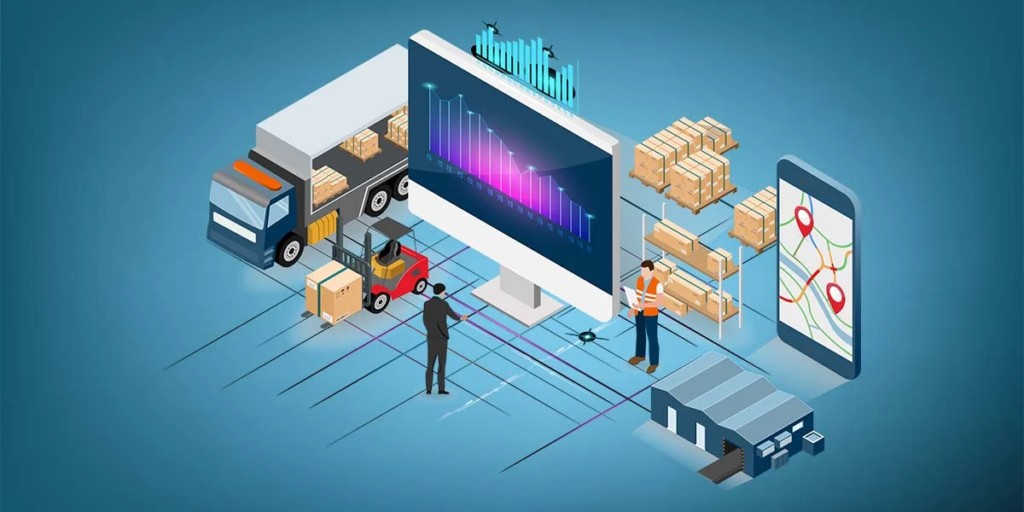In the fast-moving world of global tech, logistics plays a critical role in ensuring goods reach the right place at the right time. As the complexity of supply chains grows, especially after the lessons learned during the COVID-19 pandemic, businesses are increasingly realizing the need for collaboration—particularly in technology.
Technology collaboration in logistics means different logistics providers, companies, and stakeholders working together to share data, platforms, and tools. This collaboration is no longer just a smart move—it is becoming essential for future-ready, resilient, and sustainable supply chains.

Below, we explore five reasons why technology collaboration in logistics is critical for future supply chain success and how businesses can benefit from embracing this trend.
1. Improved Real-Time Visibility Across the Supply Chain
One of the biggest challenges in traditional supply chains is a lack of transparency. When each part of the chain works in isolation, it’s hard to know where a shipment is, what delays have occurred, or when a product will arrive.
By collaborating with tech platforms and partners, logistics companies can integrate GPS tracking, IoT sensors, and cloud-based systems to provide real-time visibility. This helps businesses respond quickly to disruptions and make informed decisions.
Example: A company using a shared platform can track trucks, containers, and inventory across different service providers. This avoids blind spots and ensures faster deliveries.
suggestion:
The Power of Real-Time Visibility in Logistics
2. Enhanced Operational Efficiency and Cost Savings
When logistics companies and tech partners work together, they can optimize routes, reduce fuel consumption, and better manage warehouse space. AI-powered tools and data sharing make it possible to plan smarter and avoid unnecessary steps.
Technology collaboration allows for automation of manual tasks, such as scheduling, inventory updates, and invoicing. This reduces human error and speeds up operations.
Case in Point: DHL partnered with a robotics firm to automate its warehouses, leading to faster package handling and fewer mistakes.
suggestion:
How Automation Is Transforming Logistics Operations
3. Better Risk Management and Supply Chain Resilience
Unpredictable events like natural disasters, political unrest, or pandemics can disrupt supply chains in seconds. Businesses need to prepare for such risks with flexible and resilient systems.
Through collaborative tech ecosystems, companies can share data and insights to anticipate risks. Predictive analytics, AI, and machine learning help identify potential bottlenecks or disruptions before they happen.
For Example: A shared dashboard across logistics partners can alert all parties of a delay at a port, allowing them to reroute shipments in advance.
suggestion:
The Role of Technology in Building Supply Chain Resilience
4. Seamless Integration of Sustainable Practices
Sustainability is no longer an option—it’s a requirement. Governments, investors, and consumers all demand greener practices in logistics and supply chains. But sustainability goals are hard to meet alone.
Tech collaboration allows partners to track emissions, optimize loads, and reduce waste. Shared platforms can calculate carbon footprints and help companies choose eco-friendly transport options.
Example: A freight forwarding company sharing data with a carbon analytics provider can accurately report on emissions and improve routes to reduce environmental impact.
suggestion:
Green Logistics: Why Collaboration Matters
5. Competitive Advantage and Innovation
Companies that embrace technology collaboration will be ahead of their competitors. Working with tech startups, cloud service providers, and data companies opens the door to innovation.

New services like same-day delivery, predictive shipping, and blockchain traceability are only possible through shared technology systems.
Also, collaborative platforms make it easier for smaller logistics firms to access advanced tools, leveling the playing field in a competitive market.
Case Study: Maersk’s partnership with IBM to use blockchain for shipping documentation has improved efficiency and reduced fraud.
suggestion:
How Blockchain Is Revolutionizing Global Logistics
Final Thoughts
The future of logistics and supply chain management is not just digital—it is collaboratively digital. As industries grow more interconnected, the success of one link in the chain depends on the strength of the others.
Technology collaboration brings speed, reliability, and sustainability to the heart of logistics. From real-time tracking to risk management, and from automation to eco-friendly operations—working together is the way forward.
Organizations that invest in building collaborative tech partnerships now will shape the future of supply chains—and leave behind those who fail to adapt.
Key Takeaways:
- The collaboration boosts transparency and real-time visibility in logistics.
- Shared systems lead to faster, cost-effective, and error-free operations.
- Joint platforms improve risk management and supply chain resilience.
- Sustainability goals are more achievable through collaborative tech ecosystems.
- Future innovation and competitive edge depend on tech partnerships.
Also Read – $150 Billion Tech Revolution: IBM’s Big Bet on America






